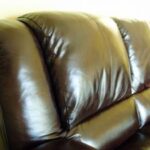Ever wondered how Major League pitchers make a baseball do what they want it to? They use the twin seams binding together the flaps of the ball’s leather covering. Using various grips across the seams, the pitcher imparts a spin on the ball as he releases it. That spin creates two advantages: speed and movement. Without seams to disrupt the airflow while in flight, a baseball would be considerably slower and would follow a straight line wherever it was thrown.
In the right hands, however, a baseball can practically dance on its way to the plate. It has to. Even an average Major League hitter can adjust to the same pitch thrown over and over again. Hence, the pitcher uses a variety of changes in speed and movement to keep batters off balance. Over the years, pitches have been passed down and named for their unique characteristics.
Not that they’re easily mastered, though. A good starting pitcher may have one solid “out” pitch, one or two that he can throw consistently for strikes, and perhaps one more that he may work in only a few times during a game. Some pitchers only work with a couple of pitches in their repertoire. Whatever their choices, there is a wide array of pitches from which to choose.
Fastball
The fastball is the primary pitch in every pitcher’s arsenal. A professional pitcher will generally throw a fastball anywhere from 88-98 mph. At that rate, even an average fastball will reach the plate–a mere 60 feet, 6 inches away–in under half a second. There are two types of fastballs: a four-seamer and a two-seamer. They differ slightly in how the pitcher grips the ball.
A four-seamer is gripped with the first two fingers across the seams of the baseball, and the ball travels on a relatively straight plane. A two-seamer is gripped with the first two fingers along the seams, which imparts a slight dip angling down and to the side as the ball crosses the plate. Some pitchers rotate their thumbs under the ball when gripping their two-seamer and slow the velocity to create a “sinker” pitch designed to induce ground balls.
Still, batters will eventually catch up to any pitcher’s fastball if that’s all he throws. The fastball isn’t designed to fool the batter; it’s meant to blow right by him. Batters know that, just as they know that the fastball is usually a fallback pitch when the pitcher is getting behind in the count. Bringing the heat when the batter is waiting on it can have some dire consequences for a pitcher.
Changeup
Also known as an “offspeed” pitch, this is a work of deception. The ball is gripped similarly to a fastball, but using the middle two fingers instead of the first two. The result is an arm action that looks exactly like the pitcher’s fastball and the same ball spin as a fastball when delivered–only this pitch travels about 5-10 mph slower than a fastball. To a hitter with less than half a second to decide, a well-thrown changeup can completely disrupt their timing simply due to the difference in speed.
Split-Finger
The split-finger fastball, or “splitter,” has a similar grip as the two-seamer, except that the fingers widen slightly so that they rest just outside the seams instead of directly on them. Thrown roughly 5 mph slower than a pitcher’s two-seamer, the result is a pitch whose delivery and trajectory mirror the fastball–until it nosedives right at the plate. It’s designed to make batters either miss entirely or beat the ball into the ground.
Forkball
The forkball is an exaggerated version of the split-finger, with the grip fingers spread even wider and the ball set more deeply into the palm. Thrown with slightly less velocity than the splitter, its tumbling dive makes for a pitch usually destined for the dirt. However, the fastball-like delivery is meant to fool the batter into committing while he thinks it’s heading right down the middle.
Curveball
The classic curveball combines a slower speed with dramatic up-down movement. The pitcher grips the ball with the first two fingers parallel along the outside seam. On delivering the pitch, the pitcher snaps the wrist to give the ball a high rate of spin, contributing to the sweeping arc of the ball’s path. Properly thrown, a curveball can break almost a foot and a half. Most curves are thrown in the 65-78 mph range. That slower speed, however, means that when the ball stays up and doesn’t have a lot of movement (known as “hanging the curve”), it’s a mistake that can get out of the park in a hurry.
Slider
A slider is thrown at a speed somewhere between a fastball and a curveball, usually in the 80-85 mph range. Although the grip is roughly the same as a standard curveball, the pitcher uses finger pressure on the release instead of a wrist snap to impart the spin. The result is a late-breaking ball with a flatter trajectory and more of a side-to-side movement (breaking left from right-handed pitchers and vice-versa).
Knuckleball
The knuckleball is a rare pitch indeed, with only a few practitioners at any given time. It is undoubtedly the hardest pitch to master, mainly because it’s the one pitch that tries to avoid any spin on the baseball. The baseball is gripped on top behind the seams with the tips of the first two fingers, with the thumb and other fingers anchoring from beneath. The delivery is more push than throw, not unlike a shot put. Pitched at anywhere from 50-70 mph, a properly thrown knuckleball takes a slow, unpredictable course to the plate that makes it nearly impossible to time or to hit–but also makes it as nearly impossible for the pitcher to control or the catcher to catch. On the other hand, for those rare pitchers that have learned it, the lessened arm stress has led to some prolonged careers.
Screwball
Gripped and thrown like a curveball, the difference is that the wrist snap is done to the outside, not the natural inside twist used on the curve. The result is a slow-moving pitch that breaks in the opposite direction from the pitcher’s curveball. The screwball is pretty much extinct due to its difficulty and the inordinate stress it places on the arm.
Sources
The Neyer/James Guide to Pitchers, Sports Illustrated, Seattle Post-Intelligencer, BaseballLibrary.com




